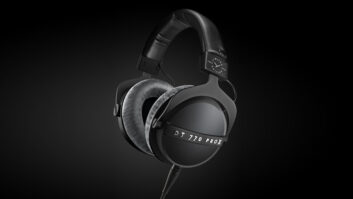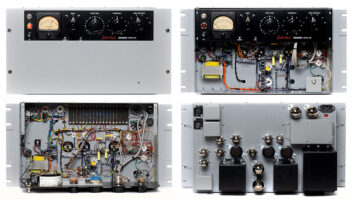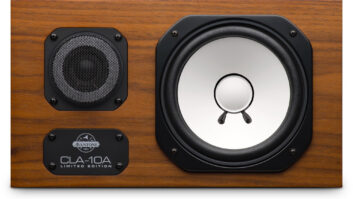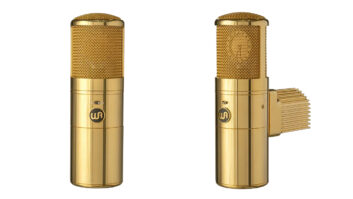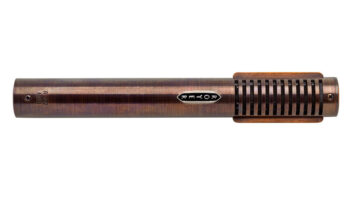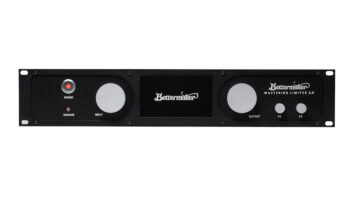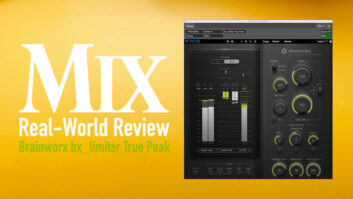
When London’s Abbey Road Studios recently celebrated its 75th anniversary, Chandler Limited design engineer Wade Goeke and the facility’s senior engineer, Peter Cobbin, marked the occasion by modifying a classic EMI limiter used to record The Beatles and Pink Floyd almost four decades ago. The new dual-channel unit, dubbed the Chandler TG12413 Zener Limiter ($5,000), is based on EMI’s RS168 Zener Limiter and TG12345 console channel, but brings a host of new controls to the party.
These additions include a two-way input-impedance switch (which changes the gain by 12 dB to drive the limiter harder or softer), a new compression mode (joining the limiter’s two original response curves), sidechain filtering, and 11-position attack time and 21-position release time controls. However, the heart of both the vintage and Chandler unit is their common gain-control element, comprising four zener diodes placed across the limiter’s input circuit. And the zener diodes’ characteristic logarithmic-compression response and saturation behavior provide the distinct personality to this neo-classic limiter.
DEAR ABBEY
The TG12413 has six rotary switches on each channel controlling I/O levels, attack and release times, compression mode and the corner frequency for the sidechain filter’s highpass filter. As there is no threshold control, the 21-position input gain switch drives the compressor/limiter, whose action is also influenced by the input impedance switch.
Three compression modes are offered. Comp 1 produces a 2:1 ratio with slow time constants designed to emulate the vintage Altec 436 compressor, while the faster-responding Limit mode emulates the Fairchild 660’s response. Those two modes were retained from EMI’s classic zener limiters, while a new mode, Comp 2, essentially delivers Comp 1’s curve but with faster release times akin to that of Limit mode.
The TG12413’s new sidechain rotary switch offers a choice of five different frequencies ranging from 30 to 300 Hz and can also be switched out of circuit. A new THD switch disables the limiter to progressively and more dramatically overload the zener diodes as input level is raised, producing up to 5 dB or more of distortion to uncompressed tracks. Separate hard-wired bypass switches are provided for each channel. The included stereo-link function is fairly primitive — you still need to adjust like controls on both channels to the same settings to achieve stable imaging. Sifam VU meters show gain-reduction amounts for each channel.
The rear panel has XLR I/Os and a multipin connector for the 6.5-foot cable that connects to the unit’s outboard power supply.
TAKE IT TO THE LIMITER
Chandler’s modifications to the classic EMI zener limiter — especially the new sidechain and adjustable attack time controls (vintage units had a fixed, fast attack time) — greatly enhance the TG12413’s musicality and flexibility. Time and again, I found myself using those controls to obtain the best results, particularly on drums and bass.
Comp 1 and 2 modes really emphasized the beater slap of a kick drum track and tightened up the shell’s low-frequency decay. In Limit mode, the kick sounded tappy with a very lean decay — a cool sound in its own right. In all cases, the kick’s sound had more beef with a sidechain setting of 150 Hz or higher. THD mode sounded awesome, enhancing the kick’s punch, richness and definition all at once. On snare, a fast attack time in Limit mode brought out room tone, while slow attack using Comp 1 or 2 put a nice point on drum hits.
On electric bass, Comp 1 and 2 sounded big and lush. Limit mode was even better for hard rock productions, transforming the instrument into a mad, straining beast. Sidechain settings of 90 Hz or higher lent the biggest bass sounds. THD mode made the bass growl nicely. The THD mode also sounded killer on electric guitar, adding presence and size. Limit mode was perfect for chicken-pickin’ country parts, driving a Telecaster’s toe-tapping “clackety clack” to the front of the mix.
Comp 2 with a 300Hz sidechain setting sounded the most transparent on lead vocal tracks, although depth was still significantly flattened and pumping was clearly audible with only moderate compression. Also, the TG12413 would not be my first choice for compressing a stereo mix. Comp 2 mode, with a 300Hz sidechain setting and a very slow attack and fast release, provided nice glue for a rockin’ country mix, but anything more than light gain reduction sucked the life out of the program. In this case, THD mode degraded rather than enhanced the mix and was cutting rather than smooth-sounding.
HAPPY ANNIVERSARY
So is this box for you? On a practical level, the names of controls are screened immediately below their knobs, making them very difficult to read with most placements. Also, the meters on my review unit weren’t calibrated to zero, making it harder to gauge gain-reduction amounts.
If you’re looking for a transparent limiter with which you can slam tracks with impunity, the TG12413 won’t satisfy. But if you want something out of the ordinary — a unique limiter with a colorful, aggressive character and vintage pedigree — and can afford the steep price tag, you should definitely give the TG12413 Zener Limiter a listen. Particularly on drums and electric instruments, it’s a monster!
Chandler Limited, 319/885-4200, www.chandlerlimited.com.
Mix contributing editor Michael Cooper is the owner of Michael Cooper Recording in Sisters, Ore. Visit him at
www.myspace.com/michaelcooperrecording.
